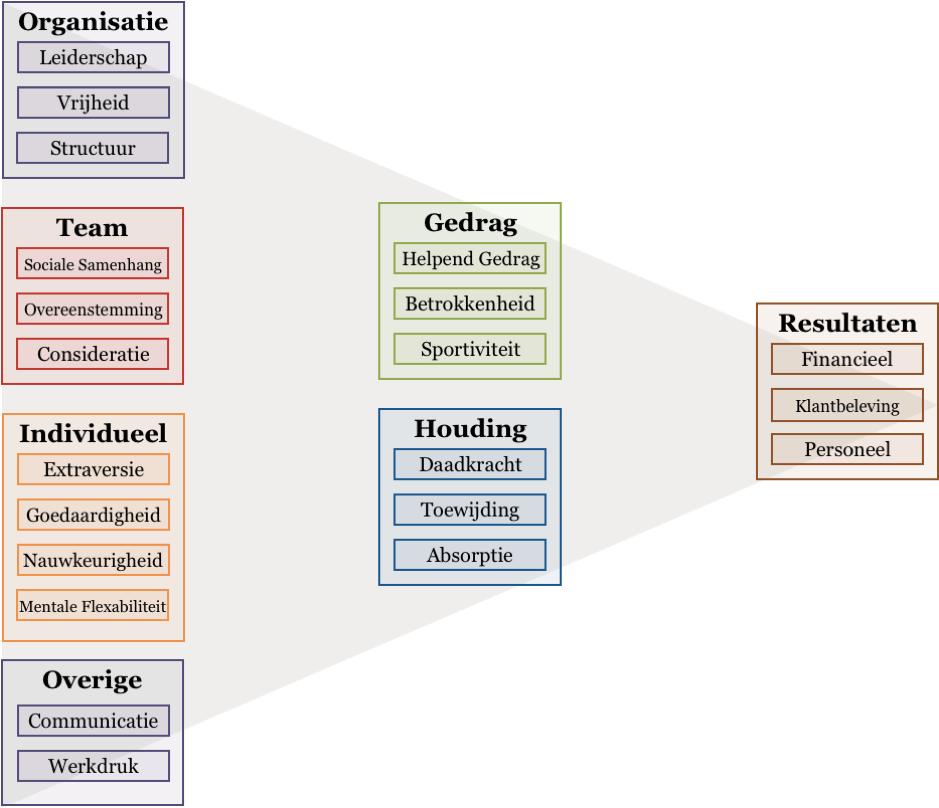
The Shift from Employee Satisfaction Research to Employee Experience Research
“If you take care of your people, your people will take care of your customers and your business will take care of itself.” – J.W. Marriott.
Everyone realizes that when your employees are happier this will always benefit your company. Also from a Harvard Business Review study, it appeared: But then, what do organizations really do with this awareness? Is your organisation constantly looking for best practices in the field of employee satisfaction? If so, do they realize the following:
Happier employees-> Happier customers-> More NPS, turnover and retention
If this is not the case, where does it go wrong? In our experience, many organizations actually know too little what drives employees, and what influences their behaviour and attitude.
So why is this happening?
- Employee satisfaction is simply a KPI, there is no structural consideration of what the ‘ drivers ‘ are of employee satisfaction. Actually, it is also about much more than employee satisfaction; you want to understand what the behaviour and attitude of employees is, drives and where that leads you in terms of commitment and value for the company. Hence we refer to “employee-experience” from now on. Employee Experience looks at the drivers of the behaviour and attitude of employees and their perception of various factors such as: meaning, freedom, structure, team etc.
 Drivers include elements such as freedom, doelgeving, leadership, organizational structure and other elements-see Insinto’s scientific model for substantiated drivers from the literature further in this article.
Drivers include elements such as freedom, doelgeving, leadership, organizational structure and other elements-see Insinto’s scientific model for substantiated drivers from the literature further in this article.
- The lack of knowledge and skill. As this is a specific area, there is often a lack of knowledge and skills within an organization to do these technical analyses and to make the data transparent in this way. Even most of the data science teams are not yet busy.
- Legal/privacy restrictions. Another point is that often, organisations are not legally allowed to make specific analyses of their employees ‘ data on an individual level. If they do, this will ensure that employees realize that the results could come to their boss, which significantly influences the results.
Where would we all want to go?
- Employees-experience as a continuous improvement within the organization. To grow (continue) as a company, it is crucial to continuously keep a finger on the pulse and to continually investigate how you can improve employee satisfaction and employee attitude and behaviour within your organization.
- To do this you have to be able to measure, structurally, for example, 1x per year complete and 1x per month a subset of your questionnaire to “keep the finger on the wrist”.
- Also, you need to know what are the most important factors that ensure satisfaction; This can be based on driver analyses (data science). Actionable insights, knowing what to focus on – that’s the insights you want as an organization.
- Quantifying the effect of higher satisfaction on your sales and other results. Within the organization you want to understand, of course, the impact of higher satisfaction; What does it matter if we score a 7 or an 8? What is the consequence of this and what would it mean for the company if we scored a 9?
- This can also be done using data science; You can link the employees data to the customer data and the financial data.
“Actually, you want to know that a 10% improvement in employee satisfaction ensures an improvement of 20% in customer satisfaction, which again provides 15% more sales”
So then you’re here:
10% + Employee satisfaction-> 20% + Customer satisfaction-> 15% + turnover
But what drives the employee-experience?
This is something that many years of research has been done on, and by organization and type of work it differs what the most important factors are for higher scores of satisfaction. And more importantly, the behaviour and attitude of employees may still be the same; Because actually, you want them to be more satisfied so that they can comply with a certain desired behavior that contributes to the growth of your organization. So we come to an Employee Experience model like this:

© insinto (2018)
Employee-satisfaction-research vs. Employee-Experience Research
Now everything is getting more together; Instead of ‘ only ‘ 1x per year to send a questionnaire and ask for the satisfaction of your employees, you are now redirecting their ‘ experience ‘ in a scientific way:
- What are the main drivers for the behaviour and attitude of the employee (and the engagement)
- How does the behaviour and attitude of employees affect customer satisfaction?
- The effect of a higher score on employee satisfaction and customer satisfaction on the results of an organization (such as turnover and retention).
Summary
The entire model you want to quantify looks like this:

The value lies in understanding the larger picture. If you measure employee Experience, and connect it to the different drivers of behavior, you fundamentally change your employee strategy. By understanding the drivers, you have the necessary insights to focus on the most important elements in your organization. This gives you the tools to not only know how high the satisfaction of employees is, but (much more importantly), which drives them. Thus, focus can be placed on improving the Employee experience, Customer experience and the results of an organization. Driving EX to drive results – that’s what we focus on. For more information, please contact us!
